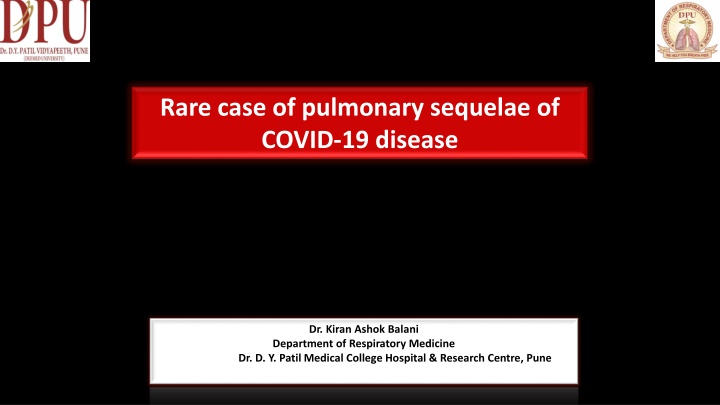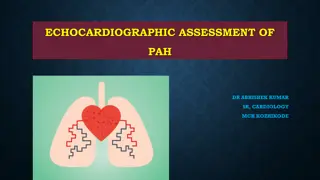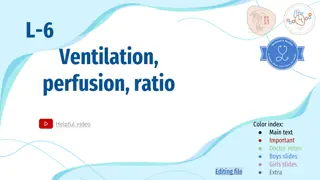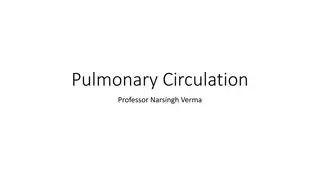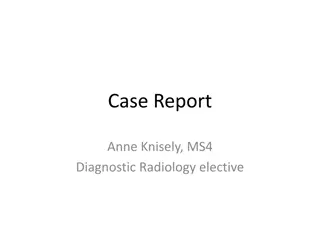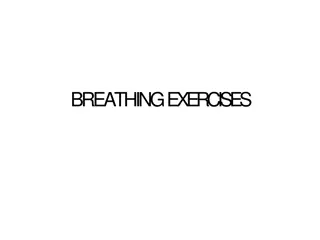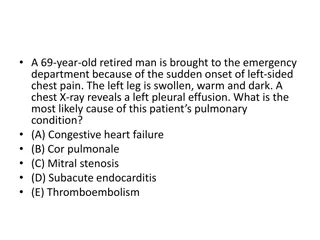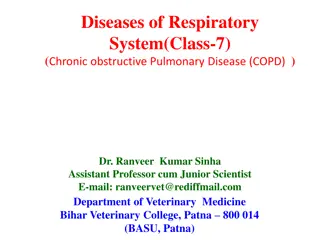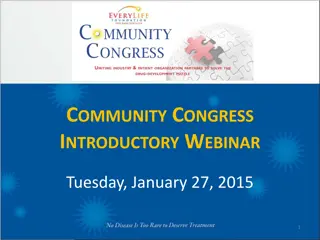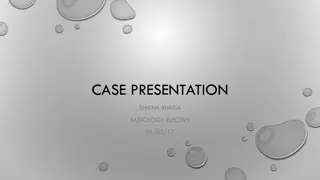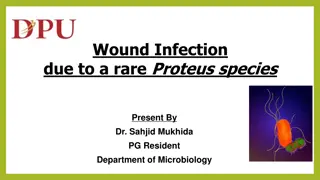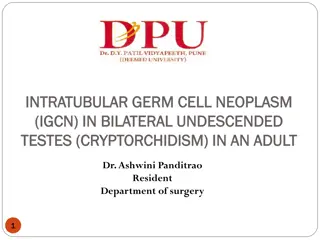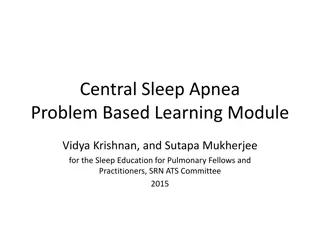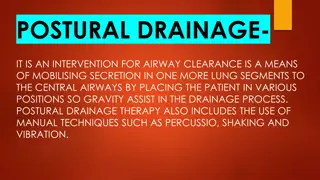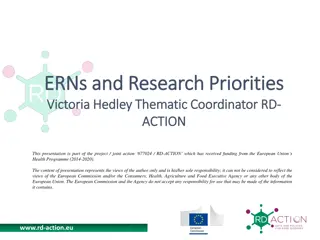Rare Case of Pulmonary Sequelae of COVID-19 Disease in a 29-Year-Old Male
29-year-old non-smoker male with a rare case of pulmonary sequelae post-COVID-19 infection. Presented with breathlessness, cough, chest pain, and right-sided pneumothorax after hospitalization. Examination showed diminished breath sounds, and investigations revealed acute hypoxemic respiratory failure.
Download Presentation

Please find below an Image/Link to download the presentation.
The content on the website is provided AS IS for your information and personal use only. It may not be sold, licensed, or shared on other websites without obtaining consent from the author.If you encounter any issues during the download, it is possible that the publisher has removed the file from their server.
You are allowed to download the files provided on this website for personal or commercial use, subject to the condition that they are used lawfully. All files are the property of their respective owners.
The content on the website is provided AS IS for your information and personal use only. It may not be sold, licensed, or shared on other websites without obtaining consent from the author.
E N D
Presentation Transcript
Rare case of pulmonary sequelae of COVID-19 disease Dr. Kiran Ashok Balani Department of Respiratory Medicine Dr. D. Y. Patil Medical College Hospital & Research Centre, Pune
Chief complaints 29 year male, clerk in IT company, non smoker, no known comorbidites Presented to us on 06/11/2020 with: Chief complaints: 1 month, increased since 5 days mMRC Grade 3 No orthopnea/paroxysmal nocturnal dyspnea/wheeze/palpitations Breathlessness Cough scanty whitish expectoration- 15 days Chest pain 5 days Right sided Sudden in onset, radiating to back No history of fever/loss of appetite
Tested COVID-19 positive on 09/10/2020, hospitalized in outside private hospital in ICU and was managed with NIV, Inj. Remdesivir and 1 dose of Tocilizumab and then discharged on 23/10/2020 At the time of discharge, dyspnea was mMRC grade 1 with occasional cough Patchy consolidation seen in both the lungs predominantly in both lower lobes with air bronchograms. Then he presented to us on 06/11/2020 with the complaints mentioned previously
Clinical course Examination General physical examination: WNL Vitals: Temp : 97.4 F PR : 124 bpm, regular, good volume, all peripheral pulses well felt RR : 32 breaths/min BP : 120/70 mmHg, right arm supine position SpO2 : 78% on room air (FiO2- 21%)
Clinical course Examination R/S :Diminished intensity of breath sounds on right side CVS : S1, S2 heard, no murmurs P/A : Soft, non tender, no organomegaly; bowel sounds heard CNS : No focal neurological deficit
Investigations in EM ECG- sinus tachycardia Trop I- <10 ABG at 12 lit/min O2 via face mask- pH- 7.37 pO2- 72.4 pCO2-38.2 HCO3-20.1 PaO2/FiO2- 106 Acute hypoxemic respiratory failure with normal acid base Tube thoracostomy was done in EM on 06/11/2020 Shifted to COVID ICU Right sided pneumothorax
Investigations Hb 15.4 Sr LDH 347 Pleural fluid analysis TLC 10,400 D-dimer 560.22 Proteins 5.70 Glucose 23 Platelets 1.76 lacs CRP 0.17 TLC 4800 Blood Urea 20 Sr Procal 0.02 PMN 10% Creat 0.76 Sr Ferritin 108.89 Lymphocytes 30% Eosinophils 50% Sr Proteins 6.00 PT, INR 11.8, 1.02 ADA 12 ABG -10 litres O2 via face mask PaO2/FiO2- 126 Exudative (as per Light s criteria) pH 7.387 pO2 75.8 pCO2 37.6 HCO3 22.1
Clinical course COVID-19 RT-PCR (08/11/2020)- Negative, and shifted to male pulmonary ward O/E- Temp- 97.5 F RR- 26 breaths/min BP-110/80mmHg PR- 90/min SpO2- 98% on 8litres with non rebreathing mask No significant clinical improvement was observed in dyspnea and hypoxia, though the lung had expanded. Possibilites- Pulmonary thromboembolism. Secondary bacterial infection.
CT pulmonary angiography + HRCT was done (09/11/2020) Partial thrombosis in Left Upper Lobar Artery and segmental arteries of apicoposterior segment of left upper lobe Diffuse GGO s with interlobular septal thickening and subpleural bands Pneumatocele in left upper lobe Multiple small cysts in right lung Resolving pneumothorax with ICD in situ in right lung B/L lower limb venous doppler- Normal study. 2D ECHO- Normal study.
Management Patient was started on Inj. Enoxaparin 0.6ml twice daily followed by Tab. Warfarin (maintaining INR at therapeutic range of 2-3). He responded well. ICD was removed after complete lung expansion and he was discharged on oral anticoagulants. He is on regular follow-up with us and the pneumatocele is gradually getting absorbed.
DISCUSSION While the current focus of management of COVID-19 is on the acute phase, attention is shifting to potential post-COVID-19 sequelae. Post COVID-19 sequelae Post-intensive care syndrome Cardiovascular Neurologic Pulmonary Pulmonary fibrosis Pneumothorax Pneumatoceles Pulmonary thromboembolism Myocardial ischemia Myocarditis Arrhythmias Cardiomyopathy Acute cerebrovascular disease Peripheral neuropathy Encephalopathy Guillain-Barre syndrome A spectrum of psychiatric, cognitive, and/or physical disability (e.g. muscle weakness, insomnia, depression, delirium)
Spontaneous pneumothorax Is one of the emerging respiratory complications of COVID-19 pneumonia. This has been described in mechanically ventilated patients, as well as on NIV or HFNC. Potential causes include the high airway pressures delivered by these modalities of respiratory support, as well as spontaneous rupture of fragile small airways infected by the virus. A literature search for spontaneous pneumothorax in COVID-19 yielded 25 cases till date. Nunna K, Braun AB, BMJ Case Rep 2021;14:e238863
Pneumatocele Are thin-walled, air filled spaces within the lung usually occurring in association with acute pneumonia and are common in infants and young children, but unusual in adults. Causes include: Severe pneumonia(Staphylococcus aureus, Streptococcus pneumoniae, or Acinetobacter) Thoracic trauma. Hydrocarbon ingestion. Positive pressure ventilation. One of the rare abnormality findings in COVID-19 patients. If clinician suspect pneumatocele finding, the progression of the disease should be monitored due to possibility of its infection. Asymptomatic pneumatocele should be conservatively managed with close observation.
Pulmonary fibrosis and role of anti-fibrotics Pirfenidone and Nintedanib, despite having different modes of action, are similarly effective in attenuating the rate of lung function decline by about 50%. The role of these drugs in the prevention and treatment of post-COVID fibrosis is unclear at present. There is, however, a clear rationale for their potential usefulness. It is worth noting that both these drugs take at least 1-3 months to demonstrate an effect. This was the time period at which the FVC started to improve compared to placebo in the INBUILD, INPULSIS, and ASCEND trials. Thus, adding them at a late stage in patients already needing ventilator support may not be ideal. Since it is patients with the severe ARDS that are most likely to end up with fibrosis, this might be the group to consider their use in. DOI:10.4103/lungindia
D-dimer and COVID-19 D-dimer is considered as an inflammatory as well as thrombotic marker. Inflammatory-when all other markers are raised and thrombotic-when other markers are low but d-dimer is raised. Though D-dimer elevation has been observed describing the clinical features of COVID-19, whether the level of D-dimer is a marker of severity has not been examined. In-hospital mortality has been associated with increased D-dimer levels, suggesting that the assay may be used as a useful biomarker for clinical outcome in COVID-19. Clinical attention to VTE risk should particularly be paid in patients with high D-dimer levels. However, a negative d-dimer should never prevent further investigation of thromboembolism if its clinical suspicion is high.* An imaging diagnostic test is suggested (CTPA) to determine embolism in regard to the irregularities in the quantitative determination of d-dimer levels. A d-dimer test alone is not sufficient.* Pulmonary embolism should continue to remain a differential diagnosis in hypoxemic patients even after recovery from COVID-19. American journal of respiratory and critical care medicine-atsjournals.org;159:1445-1449 Yao et al. Journal of Intensive Care (2020)
Clinical pearls Spontaneous pneumothorax and Pneumatocele are rare complications seen in COVID-19. Late onset pulmonary arterial thrombosis is uncommon but that emphasizes the need for post COVID prophylactic oral anticoagulants(moderate to severe disease and in those with risk factors) Protocols suggest that patients hospitalized with COVID-19 especially those with high risk, should be strongly considered for extended thromboprophylaxis up to 45 days post discharge.* Mean time from onset of symptoms to development of pneumothorax in non-mechanically ventilated patients was 19 days among the cases reported so far. Therefore, pneumothorax should be on the D/D if a patient presents with sudden onset of chest pain or respiratory distress even after resolution of symptoms.* DOI:https://doi.org/10.1016/j.chest.2020.05.559 Nunna K, Braun AB, BMJ Case Rep 2021;14:e238863
